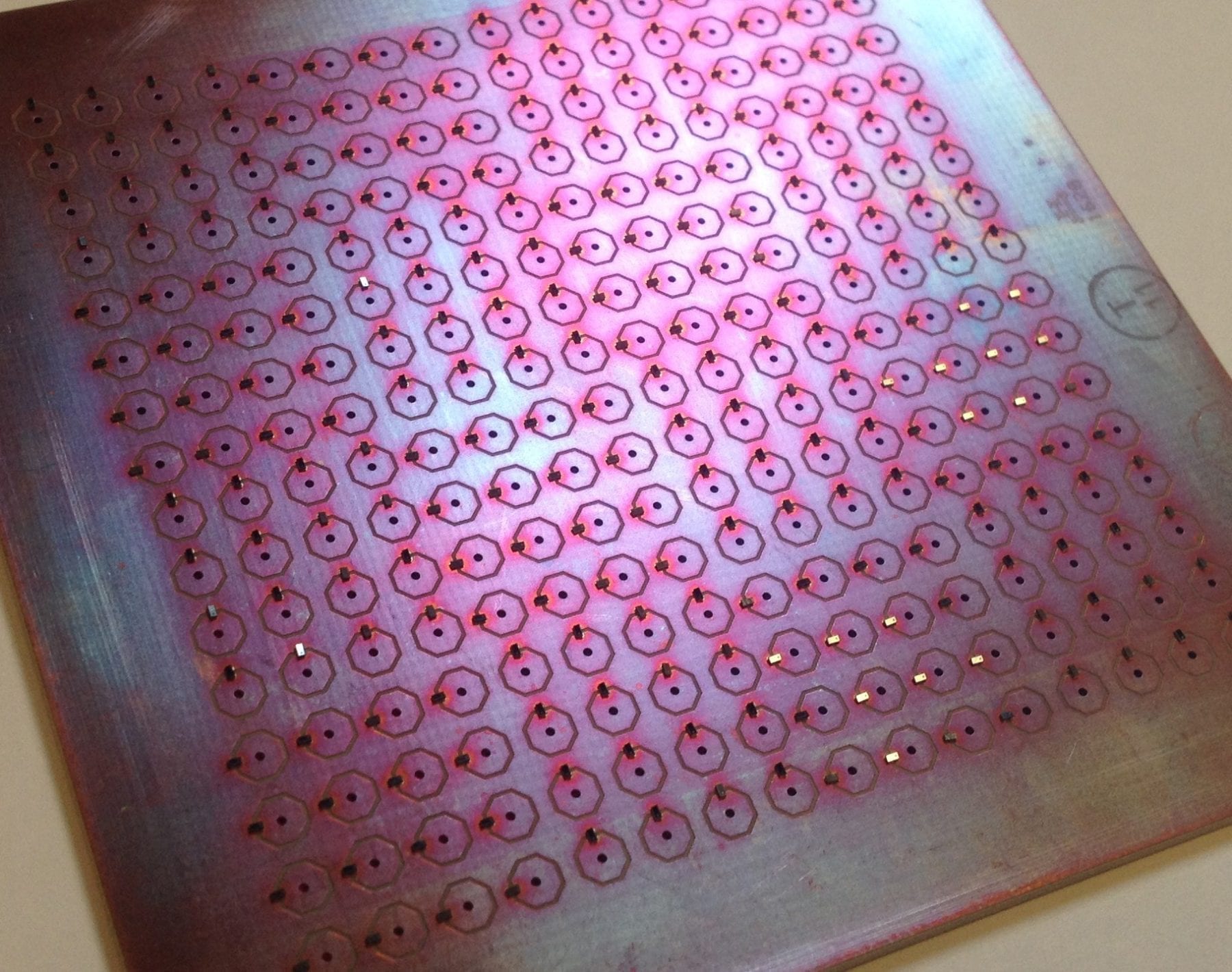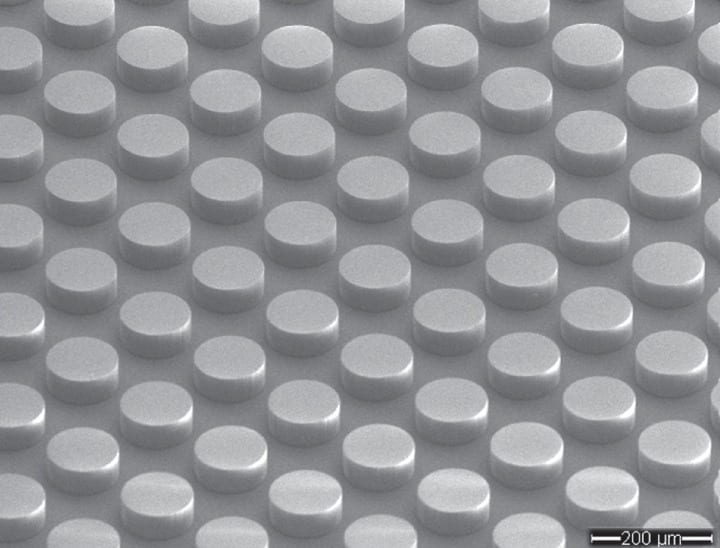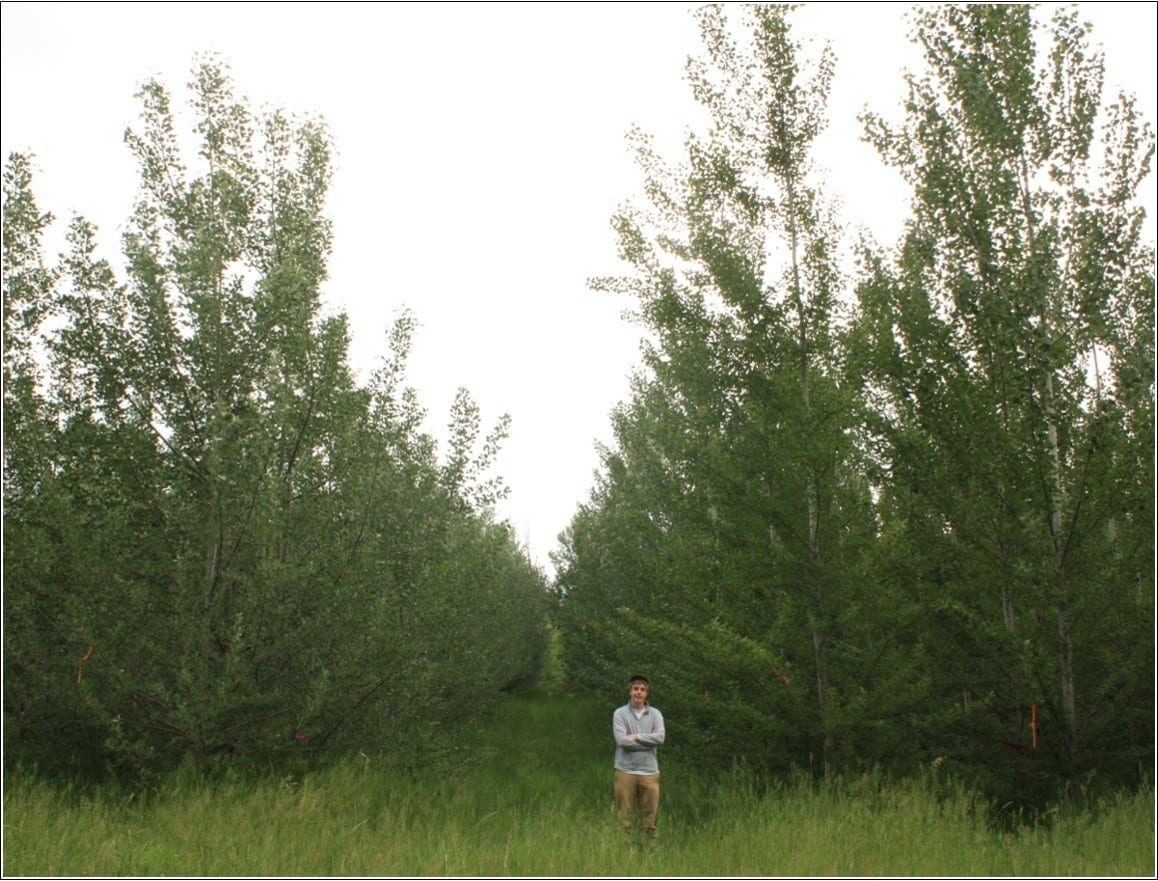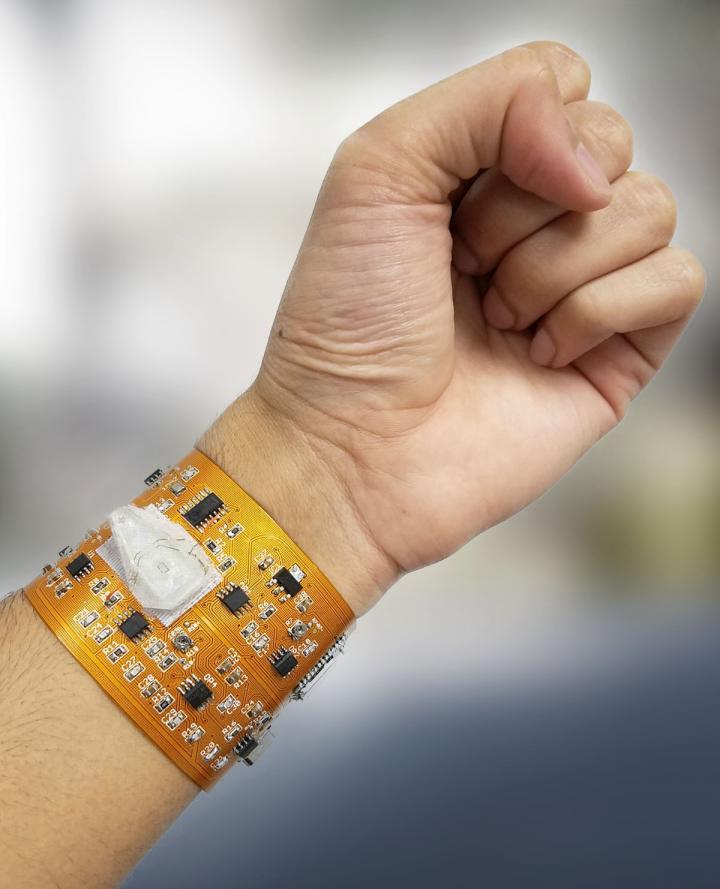
Relief may be on the horizon for anyone who has ever jumped around a room like a jack-in-the-box to get motion-sensing lights to turn back on. A new motion sensor based on metamaterials is sensitive enough to monitor a person’s breathing.
In a pair of new studies, researchers from Duke University and Institut Langevin, France, have shown that patterns made by radio waves can detect a person’s presence and location anywhere inside a room.
The findings appeared recently in Scientific Reports and Aug. 6 in the Physics Review Letters.
This new motion-sensing technology could lead to new smart home devices for energy savings, security, healthcare and gaming.
“Energy companies don’t love infrared motion detectors because they have lots of problems,” said David R. Smith, the James B. Duke Professor of Electrical and Computer Engineering at Duke. “The amount of space they can cover is limited, a person has to be within their line of sight to be detected, and probably everyone has had the experience where the lights have gone off because they’ve sat still for too long. Radio waves can get around all of these limitations.”
In their initial paper published earlier this year, the researchers took advantage of patterns created by radio waves bouncing around a room and interfering with themselves. These unique patterns change with the slightest perturbation of the room’s objects, allowing a sensitive antenna to detect when something moves in or enters the room. And by comparing how these patterns change over time, they can also be used to detect cyclical movements like a fan blade turning—or even a person breathing.
In the latest paper, the team shows that with a bit of training, the system can also extract information necessary to locate objects or people in a space. The demonstration system was taught the pattern of radio waves scattered by a triangular block placed in 23 different positions on a floor. That calibration is enough not only to distinguish between the learned 23 scenarios, but to also distinguish the positions of three identical blocks placed in any one of 1,771 possible configurations.
The technology works by taking advantage of the way radio waves behave in an enclosed room. Their ability to continuously reflect off multiple surfaces creates complex interference patterns throughout a room. In the past, this complexity has been an obstacle for systems trying to locate the origin of a signal. But Smith and his colleagues have now shown that this same complexity can be tapped to detect movement and locate objects within a room.
Learn more: Ricocheting Radio Waves Monitor the Tiniest Movements in a Room
The Latest on: Motion-sensing
[google_news title=”” keyword=”motion-sensing” num_posts=”10″ blurb_length=”0″ show_thumb=”left”]
via Google News
The Latest on: Motion-sensing
- Co-Founder Logan Paul Defends Prime Sports Drink on TikTok as Motion to Dismiss Decision Is Pendingon April 26, 2024 at 3:00 pm
YouTube influencer Logan Paul attempted to dispute class action allegations that Prime Hydration drinks contain dangerous levels of PFAS, posting a TikTok video addressing the suit to his more than 18 ...
- G-SHOCK Introduces New Digital Basic Step Tracker Serieson April 26, 2024 at 11:50 am
G-SHOCK has pulled back the curtain on its latest sensor technology innovation: the Digital Basic GDB500 series, a watch group built with step trackers and Bluetooth capabilities for elevated fitness ...
- Asus ROG Ally update promises huge FPS boosts — here are the results of our testingon April 26, 2024 at 10:36 am
The Asus ROG Ally has received a performance update on April 25 that has the potential to "increase" frame rates and smooth out gameplay. But after our tests, is it worth it?
- 12 Vital Security System Maintenance Tasks You’re Skipping—And How That Makes Your Home Vulnerableon April 26, 2024 at 8:45 am
We may earn revenue from the products available on this page and participate in affiliate programs. Learn More › Installing a security system is a great way to boost home security and grant you peace ...
- West Police Department starts using motion sensor cameras to catch suspects on the roadon April 25, 2024 at 4:19 pm
The West police department has updated their way of tracking down the vehicles of suspects.With technology from Flock Safety, motion-sensor cameras will take pictures of any license plate that passes ...
- NIST researchers develop magnetics-based analyte sensoron April 25, 2024 at 8:45 am
Sensing platform uses magnetized hydrogels and a smartphone’s magnetometer to measure glucose concentration in test samples ...
- UClear Motion HDX-V Bluetooth Helmet Audio System: Hands-On Reviewon April 24, 2024 at 5:56 pm
The UClear Motion HDX-V is the flagship Bluetooth Helmet Audio System. Read our hands-on review to learn more.
- Inclusively | Can Wi-Fi sensing help elderly and disabled people live at home independently?on April 23, 2024 at 4:37 am
Inclusivity starts at home. Being able to live independently at home is, for many of us, fundamental to our quality of life. How can technology help us ...
- Aqara presence sensor FP2 is even more versatile than beforeon April 22, 2024 at 4:46 pm
The Aqara FP2, on the other hand, is dynamic and tracks movement, whether that’s coming in or out. It can detect if you’ve entered a room and sat down or walked on through. Internally, it equips a ...
via Bing News











